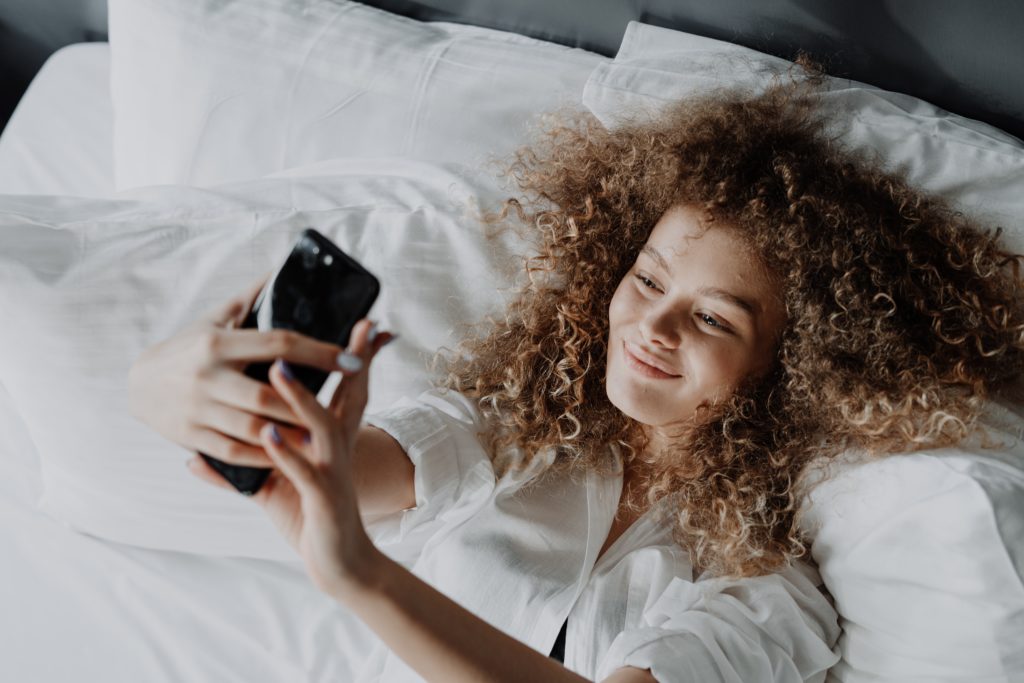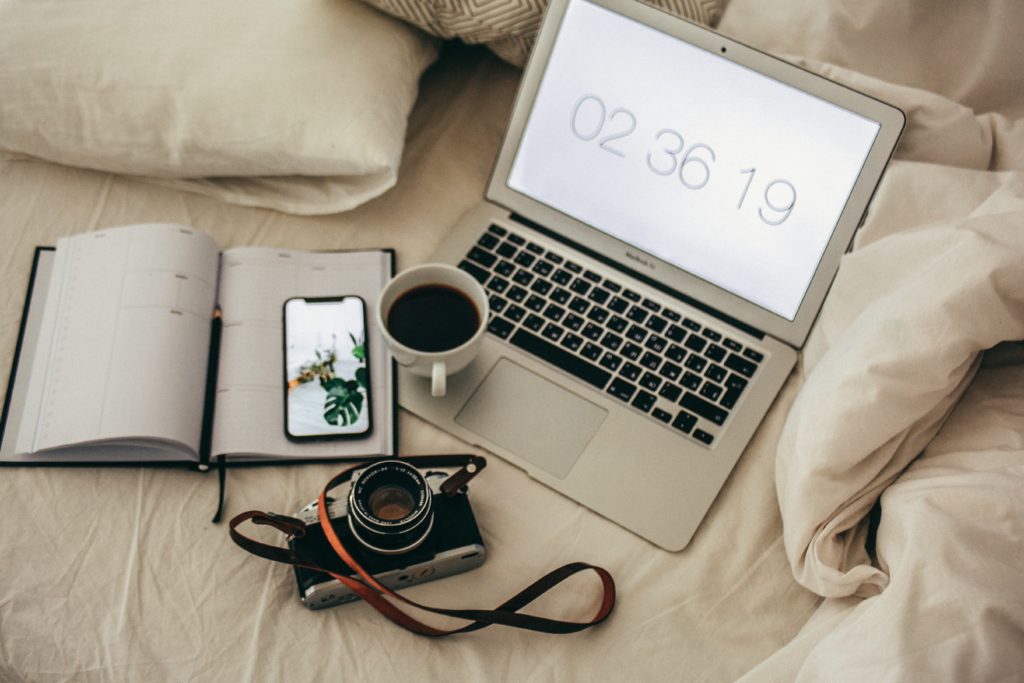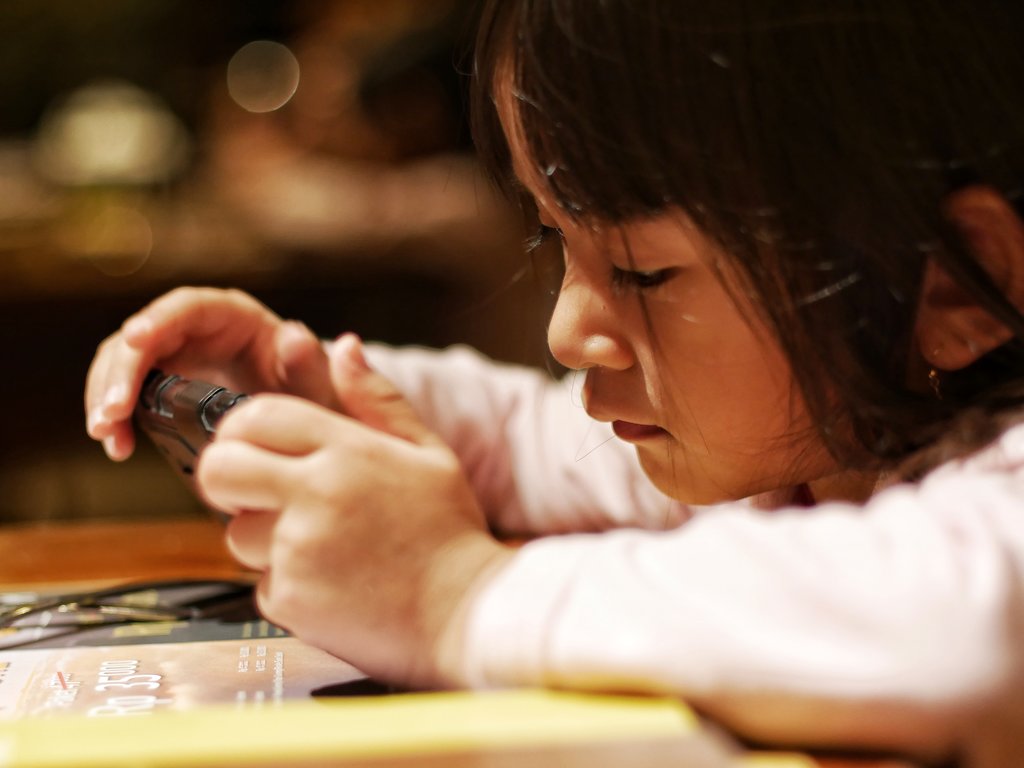5 Mins Read
Even before the pandemic, the amount of time we spend in front screens has been growing by double digits every year, and with that, concerns about the consequences to our health. The more screen time we endure, the more artificial blue light we are exposed to.
Our smartphones have become our most essential material object and we can’t imagine our lives without them (many of us would have trouble functioning without them). The convenience of having everything we need a click away has come at a high price though, especially when it comes to blue light exposure.
Spending hours on social media, sending and responding to emails right before going to bed, and talking to our friends & family constantly has made it even harder to control our smartphone usage. Below, we talk about why blue light exposure is so problematic and some helpful ways you can reduce the harm it causes.

What gives off blue light?
Basically, any light you see, whether it is from the sun, a screen or a light bulk contains blue light. We need blue light (and natural blue light from the sun is very good for us), as it tells us that it’s daytime and time for us to be awake. The problem is that nowadays, we get artificial blue light after the sun sets, and this delays the release of melatonin, a hormone produced in response to darkness that helps your body prepare for deep sleep.
What’s the problem with blue light?
Research from Oregon State University Research (2019) suggests that the blue wavelengths produced by light-emitting diodes damage cells in the brain as well as in our eye retinas. The latter are important for our vision as they trigger nerve impulses that pass via the optic nerve to the brain, where visual images are formed.
And by the way, it’s not only smartphones and computers that emit blue light. We get it from household appliances too, including fridges and lightbulbs. Moral of the story: modern life means we are bombarded by artificial blue light.
Prolonged overexposure (more than 12 hours a day) to blue light means eye strain, poorer sleep (or worse: insomnia), which then affects our digestive, endocrine and, ultimately, immune systems, and in some cases blindness (though the studies on this last one are mixed). Blue light also can cause sleep disorder is a common cause of memory problems, Type 2 diabetes, weight gain, cardiovascular disease, and general emotional distress.

How to decrease blue light exposure?
The easiest answer is obvious: reduce the amount of time you spend glued to your phone and make sure your bedroom doesn’t have any objects that emit blue light. But… that’s a tall order for most of us screen-addicts. So here are some helpful tips and suggestions on how to reduce blue light exposure if you can’t cut it out altogether.
Use a light blue filter app
Since we’re all pretty much addicted to one app or another, why not leverage them? Try EasyEyes, Blue Light Filter, Night Shift or Darker. Your choices are endless and on the whole, they work well and are mostly similar. Also, check your phone settings- for example Samsung phones have a blue light setting so you can remove blue light altogether (just remember the setting is on when you are taking photos).
Reduce & control screen time
You can easily do this through your smartphone and/or laptop settings: choose the maximum amount of time you want to spend in front of the screen and set break reminders- there are also great apps for this, which will prompt you or motivate you with mini challenges. (Need more help? Here’s our Green Queen ‘how to break up with your phone’ guide.)
Maintain strict screen-free sleep hygiene
No more last-minute social media browsing before going to bed, no smartphone right next to your pillow, and ideally, don’t keep it in the bedroom either- these are sleep hygiene basics. Try to switch your phone off at least 1-2 hours before falling asleep. And if you can, don’t make it the first thing you touch in the morning. Try drinking water, washing your face, listening to music, an AM yoga/stretch sesh- watch your mood improve significantly within days thanks to this one small change.
Give blue-light-blocking glasses a try
While not everyone agrees that these glasses work, we have teammates who do a lot of data entry and/or design work on tiny screens who swear they are a lifesaver, so it may be worth using them. Also good to know: you can get blue light blocking lenses for your prescription glasses- most opticians now offer this as standard.
Use the 20-20-20 rule when WFH
Every 20 minutes, look at something 20 feet away (about 6 metres) for 20 seconds, so that your eyes get a break and can relax – this is why it feels good to sit next to a window. Also try to sit at least half a metre away (arm’s length) from your screen, it makes a huge difference in terms of eye strain. Finally, eye drops can help keep your peepers lubricated whilst you are working if they feel dry/irritated.
Get your eyes checked regularly
Unfortunately one of the realities of ageing is that your eyesight deteriorates, so every few years, it’s worth getting an eye test to make sure yours are doing well. Too much blue light when you are already experiencing eye strain could cause everything from migraines to stress-induced anxiety.
Want more? Check out our Digital Detox Guide.
Lead Image Courtesy of Scop.io




